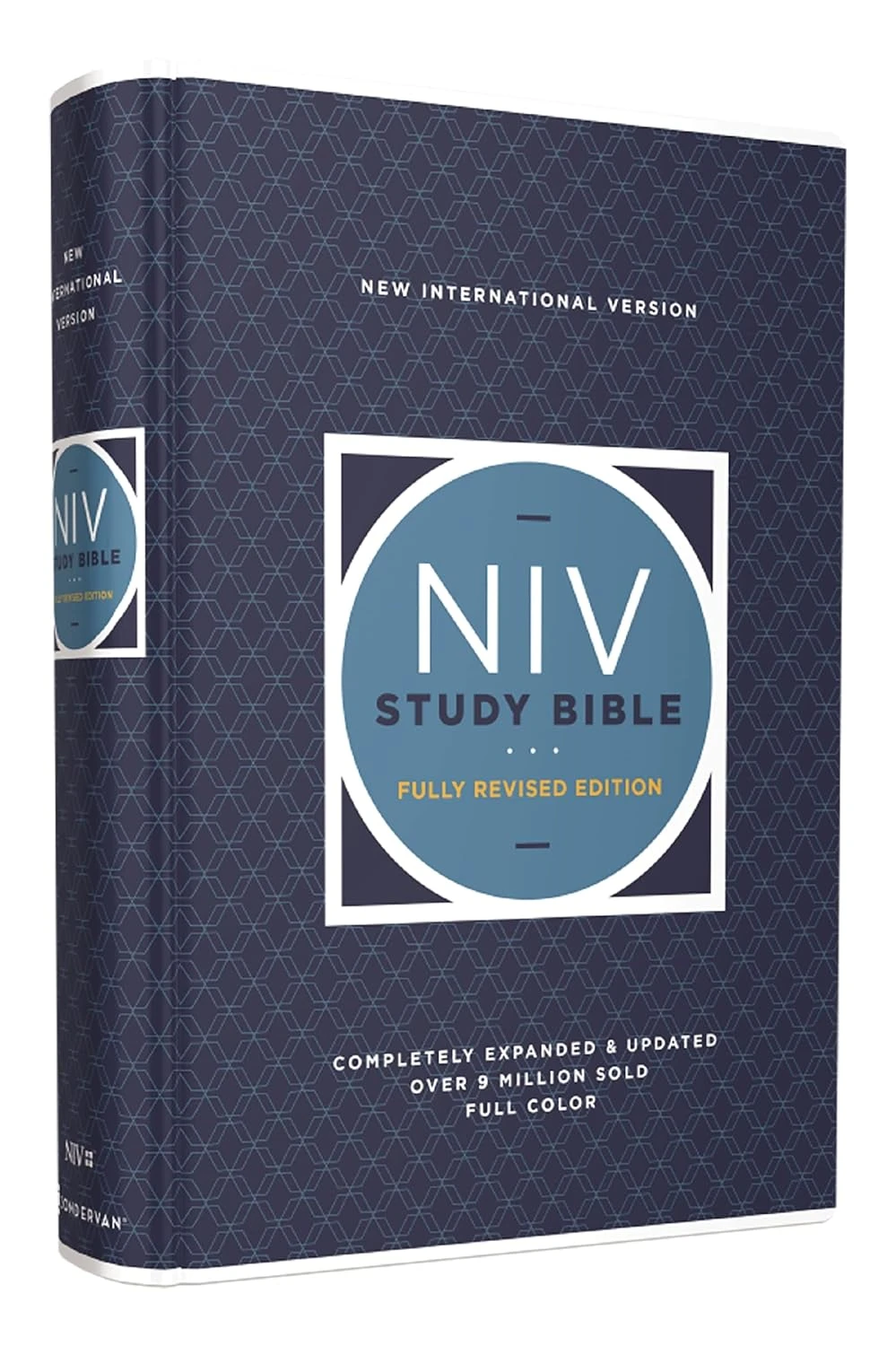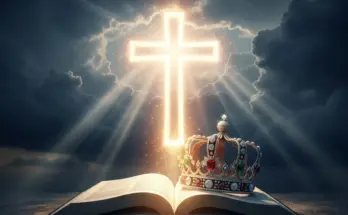Few chapters in Scripture move the heart like Isaiah 53. This passage, written centuries before the birth of Jesus, describes a suffering servant who bears the sins of others. The prophet Isaiah paints a picture so detailed that it reads like an eyewitness account of Christ’s crucifixion. Every verse points toward the heart of God’s redemptive plan. For new believers, Isaiah 53 offers one of the clearest connections between the Old Testament prophecies and the life of Jesus.

NIV Study Bible Hardcover
With its decades-long legacy of helping readers grasp the Bible’s meaning, the NIV Study Bible embodies the mission of the NIV translation to be an accurate, readable, and clear guide into Scripture. Specifically designed to expand upon the NIV, the NIV Study Bible’s editorial team crafts that same accuracy and clarity into every study note.
Get Yours on AmazonIsaiah wrote during a time when Israel was divided and rebellious. The people longed for deliverance, but few understood the cost of redemption. God revealed to Isaiah that true salvation would not come through political power but through the suffering of a servant. This servant would take upon himself the iniquities of all people. Through his pain and death, many would find healing and peace with God.
When we read Isaiah 53, we are invited to look at the cross through the eyes of prophecy. The chapter challenges us to see our sin, to recognize God’s love, and to understand the depth of Jesus’ sacrifice. It is both a sobering and hope-filled message for all who believe.
The Rejected Servant (Isaiah 53:1–3)
Who has believed what he has heard from us? And to whom has the arm of the Lord been revealed? For he grew up before him like a young plant, and like a root out of dry ground; he had no form or majesty that we should look at him, and no beauty that we should desire him. He was despised and rejected by men, a man of sorrows and acquainted with grief; and as one from whom men hide their faces he was despised, and we esteemed him not.
“Who has believed what he has heard from us? And to whom has the arm of the Lord been revealed?” These opening verses reveal the servant’s rejection. Isaiah describes someone who would come without worldly beauty or majesty. People would look at him and see nothing impressive. Instead of honor, he would face rejection, sorrow, and grief.
In this section of Isaiah 53, we see how humanity often overlooks God’s ways. The “arm of the Lord” represents God’s saving power, yet few recognize it when it appears in humble form. Jesus perfectly fulfilled this prophecy. He came as the Messiah, yet many did not believe because he did not meet their expectations of power or prestige.
The phrase “a man of sorrows” reminds us that Jesus was familiar with pain, both physical and emotional. He understood human suffering firsthand. He carried the weight of rejection, loneliness, and betrayal. When we experience sorrow, we can find comfort knowing Christ shared in our pain. Through his humility, we learn what true greatness looks like. God’s plan was never about outward strength, but about inward obedience and sacrificial love. The rejected servant became the source of our redemption.
The Suffering in Our Place (Isaiah 53:4–6)
Surely he has borne our griefs and carried our sorrows; yet we esteemed him stricken, smitten by God, and afflicted. But he was pierced for our transgressions; he was crushed for our iniquities; upon him was the chastisement that brought us peace, and with his wounds we are healed. All we like sheep have gone astray; we have turned, every one, to his own way; and the Lord has laid on him the iniquity of us all.
“Surely he has borne our griefs and carried our sorrows.” These verses form the heart of Isaiah 53. The prophet shows that the servant’s suffering was not for his own sin but for ours. Humanity thought he was punished by God, but in reality, he carried the punishment we deserved.
Isaiah continues, “He was pierced for our transgressions; he was crushed for our iniquities.” These words point directly to the crucifixion of Jesus. The piercing of his hands and feet, the bruising of his body, and the burden of sin he bore all fulfill this prophecy. The punishment that brought us peace fell upon him, and by his wounds, we are healed.
The next verse makes it personal. “All we like sheep have gone astray.” Every person has wandered from God’s path, yet the Lord laid upon his servant the iniquity of us all. The picture is one of substitution. Jesus took our place on the cross so we could be restored to God. This passage reveals the depth of divine mercy and the seriousness of sin. It is not just a story of pain, but of love that saves.
The Silent Lamb (Isaiah 53:7–9)
He was oppressed, and he was afflicted, yet he opened not his mouth; like a lamb that is led to the slaughter, and like a sheep that before its shearers is silent, so he opened not his mouth. By oppression and judgment he was taken away; and as for his generation, who considered that he was cut off out of the land of the living, stricken for the transgression of my people? And they made his grave with the wicked and with a rich man in his death, although he had done no violence, and there was no deceit in his mouth.
“He was oppressed, and he was afflicted, yet he opened not his mouth.” This part of Isaiah 53 portrays the servant’s quiet endurance during suffering. Like a lamb led to slaughter, he submitted without resistance. Jesus fulfilled this prophecy during his trial and crucifixion. When falsely accused, he did not argue or defend himself. His silence displayed complete trust in God’s will.
Isaiah says the servant was taken away by oppression and judgment. He was cut off from the land of the living, meaning he died before receiving justice. The people thought he was punished for his own wrongdoing, but his death was for others. The prophecy even mentions that his grave would be with the wicked and the rich. Jesus was crucified between two criminals and buried in the tomb of Joseph of Arimathea, a wealthy man.
The servant’s silence and submission were not signs of weakness. They were expressions of obedience. He willingly accepted suffering to fulfill God’s plan. This teaches us the value of humility and surrender. God’s purposes often unfold through quiet faithfulness, not loud resistance. The Lamb of God bore sin through meekness, not might.

Halley’s Bible Handbook, Deluxe Edition: Revised & Expanded
This full color, revised and updated 25th edition is both comprehensive and inviting, including a concise Bible commentary, important discoveries in archaeology, related historical data, church history, historical geography, and more. It is the culmination of Dr. Halley’s mission: that every Christian be enabled and encouraged to consistently and devotedly read and understand their Bible.
Get Yours on AmazonThe Lord’s Will and Reward (Isaiah 53:10–12)
Yet it was the will of the Lord to crush him; he has put him to grief; when his soul makes an offering for guilt, he shall see his offspring; he shall prolong his days; the will of the Lord shall prosper in his hand. Out of the anguish of his soul he shall see[j] and be satisfied; by his knowledge shall the righteous one, my servant, make many to be accounted righteous, and he shall bear their iniquities. Therefore I will divide him a portion with the many, and he shall divide the spoil with the strong, because he poured out his soul to death and was numbered with the transgressors; yet he bore the sin of many, and makes intercession for the transgressors.
“It was the will of the Lord to crush him.” These closing verses of Isaiah 53 reveal the divine purpose behind the servant’s suffering. Though his pain was real, it was not meaningless. God allowed it so that through his sacrifice, salvation could be offered to all. His death became the offering for sin, but his story did not end there. Isaiah foretold that the servant would “see his offspring” and “prolong his days,” pointing to resurrection life.
After his suffering, the servant would see the results of his labor and be satisfied. Through his knowledge, many would be justified, meaning declared righteous before God. The servant would bear their iniquities and receive great honor. He would be given a portion among the great because he poured out his soul unto death and interceded for transgressors.
This final section points to the triumph that follows sacrifice. Jesus’ obedience brought redemption, and his resurrection brought victory. The suffering servant became the exalted Savior. His work on the cross satisfied God’s justice and opened the way for eternal life. Isaiah’s prophecy ends with hope, reminding us that God’s plan always leads to glory.
Closing Thoughts on Isaiah 53
When we study Isaiah 53, we find a prophecy that beautifully captures both the suffering and glory of Christ. Every verse reveals the heart of the gospel. The servant took our pain, bore our sin, and brought us peace with God. Through his stripes, we are healed, forgiven, and made whole.
Isaiah 53 reminds us that God’s plan of salvation was not an afterthought. It was foretold hundreds of years before Jesus came. The chapter helps us see that our faith rests not in human effort but in the finished work of Christ. He was rejected so we could be accepted. He was wounded so we could be healed.
For believers, Isaiah 53 deepens our gratitude and strengthens our trust. It invites us to look to the cross with humility and joy. As we follow the servant’s example of obedience and love, we remember that the path of suffering can lead to glory when we walk with God.
Continue Exploring Chapter Outlines
This outline is part of our growing collection of Chapter Outlines. You can explore more Bible Outlines or return to the Bible Study Toolbox homepage for outlines, studies, and resources to deepen your understanding of God’s Word. Contact us anytime.



